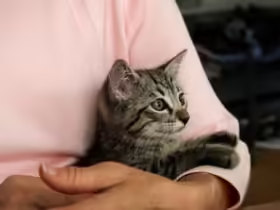Teaching your dog the “Drop It” cue is an essential skill that enhances both their safety and your control over their behavior. Whether it’s to prevent them from chewing on something dangerous, to retrieve a stolen item, or simply to manage their playtime better, the “Drop It” cue can be incredibly useful. This guide will walk you through a detailed, step-by-step process to effectively teach your dog this valuable command.
Why Teach ‘Drop It’?
Before diving into the training process, it’s important to understand why teaching your dog the “Drop It” cue is beneficial:
- Safety: Ensuring your dog drops objects that could be harmful or dangerous, like chewing on toxic items or swallowing small objects.
- Control: Helping you manage your dog’s behavior in various situations, including retrieving toys, handling food, and more.
- Enhanced Communication: Strengthening your bond by improving your ability to communicate and control your dog’s actions effectively.
Step 1: Choose the Right Motivation
To successfully teach the “Drop It” cue, you’ll need to use motivation that will encourage your dog to comply. This often involves using high-value rewards:
1. Select High-Value Treats
- Choose Irresistible Treats: Pick treats that are particularly appealing to your dog. These should be different from their regular treats and should motivate them to perform the desired behavior.
- Consider Toy Alternatives: For some dogs, toys or playtime might be a better motivator than food. If your dog loves a specific toy or game, use it as a reward during training.
2. Prepare for Practice Sessions
- Create a Training Area: Choose a quiet, distraction-free area for your training sessions to help your dog focus.
- Gather Supplies: Have your treats or toys ready and easily accessible for seamless training.
Step 2: Introduce the ‘Drop It’ Command
The introduction phase involves teaching your dog to associate the command “Drop It” with the action of letting go of an object:
1. Start with a Favorite Toy
- Use a Safe Toy: Begin with a toy that your dog likes but is not overly possessive about. This helps prevent frustration and makes the training process smoother.
- Engage Your Dog: Play with the toy to get your dog excited and engaged. Then, hold the toy and let your dog grab it.
2. Introduce the Cue
- Give the Command: Once your dog has the toy, say “Drop It” clearly and calmly. Use a neutral tone to avoid adding pressure or excitement.
- Use a Treat as an Incentive: While your dog is holding the toy, show them a high-value treat or another toy. Hold the treat close to their nose to encourage them to drop the toy.
- Reward Immediately: As soon as your dog drops the toy to get the treat, praise them enthusiastically and give them the treat. This reinforces the behavior you want.
Step 3: Practice and Reinforce
Consistency and repetition are key to reinforcing the “Drop It” cue and ensuring your dog responds reliably:
1. Repeat Training Sessions
- Short, Frequent Sessions: Conduct short, frequent training sessions (5-10 minutes) to keep your dog engaged and prevent them from becoming bored or frustrated.
- Gradual Difficulty: As your dog gets better, gradually increase the difficulty by using toys or objects they are more reluctant to drop. This helps solidify their understanding of the cue in different contexts.
2. Incorporate the Cue in Daily Life
- Use the Cue Regularly: Practice the “Drop It” cue during everyday situations where your dog picks up objects or toys. This helps them learn to respond to the cue consistently in various contexts.
- Apply in Real Scenarios: For example, if your dog grabs something they shouldn’t have, calmly use the “Drop It” cue and reward them when they comply. This reinforces the importance of the command in real-life situations.
Step 4: Troubleshooting and Tips
Even with the best training, you might encounter some challenges. Here are common issues and tips for addressing them:
1. Dog Won’t Drop the Item
- Check Motivation: Ensure the reward you’re using is motivating enough for your dog. Sometimes, switching to a higher-value treat or toy can help.
- Simplify the Command: Start with objects your dog is less attached to, and gradually progress to more challenging items. This helps build their confidence and understanding of the cue.
- Avoid Force: Never forcefully take an item from your dog’s mouth. This can create fear or resistance and undermine the training process.
2. Dog Becomes Possessive
- Manage Possessiveness: If your dog becomes possessive, practice “Drop It” with items they are less attached to initially. Build their comfort and trust in letting go of objects without feeling threatened.
- Positive Reinforcement: Focus on positive reinforcement and reward your dog for any attempt to release the item, even if it’s not perfect. Gradually increase the expectations as they improve.
3. Consistency Is Key
- Be Consistent: Consistency in using the “Drop It” cue and rewarding compliance is crucial. Ensure everyone in the household uses the same cue and training methods to avoid confusion.
- Patience and Persistence: Training takes time, so be patient and persistent. Celebrate small successes and keep practicing regularly to reinforce the behavior.
Advanced Tips for ‘Drop It’
Once your dog reliably responds to the “Drop It” cue, you can further enhance their training with these advanced tips:
1. Add Distractions
- Practice with Distractions: Gradually introduce distractions during training to help your dog learn to respond to the cue even in more challenging environments.
- Simulate Real Situations: Use real-life scenarios, such as dropping an item during a walk or while visiting a park, to practice the cue in diverse contexts.
2. Teach Related Commands
- Add Commands: Teach additional related commands, such as “Leave It” or “Take It,” to expand your dog’s ability to respond to different cues and manage their behavior more effectively.
- Combine Commands: Practice combining commands, like “Drop It” and “Come,” to further enhance your dog’s responsiveness and control.
Conclusion
Teaching your dog the “Drop It” cue is a valuable skill that enhances their safety and your control over their behavior. By choosing the right motivation, introducing the command effectively, practicing consistently, and troubleshooting challenges, you can successfully teach your dog to drop objects on command.
Remember to be patient, use positive reinforcement, and incorporate the cue into everyday situations to ensure your dog responds reliably. With these strategies, you’ll strengthen your bond with your dog and enjoy a more harmonious and well-behaved companion.











Leave a Reply